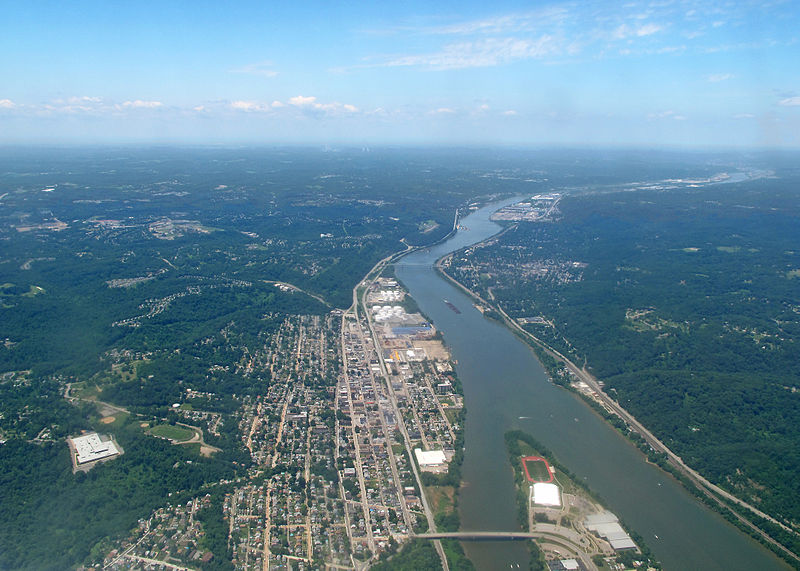Pittsburgh region proceeding with “green infrastructure experiment”

Aerial view of Coraopolis, Pennsylvania shortly after takeoff from Pittsburgh International Airport. (Photo credit: Wikimedia Commons)
The Goal: Reduce Combined Sewer Overflows
“The Pittsburgh Water and Sewer Authority and communities surrounding Pittsburgh face a daunting and costly challenge: how to reduce the amount of untreated stormwater and sewage that’s released into rivers when its outdated infrastructure is overwhelmed following a rainstorm,” wrote Moriah Balingit and Don Hopey in an article published in the Pittsburgh Post-Gazette.
The drivers for action by Pittsburgh and 82 other communities in the surrounding region are consent orders from the Pennsylvania Department of Environmental Protection and the federal Environmental Protection Agency.
In July 2013, the Pittsburgh Water and Sewer Authority (PWSA) submitted a Wet Weather Feasibility Study that also commits the city to consideration of “green infrastructure” that retains rainwater and reduces flow into overburdened sewers.
Green Infrastructure Experiment
Jim Good, Executive Director of PWSA, said the authority could have met the requirements solely with “grey” infrastructure including expansion of pipes. But it went above and beyond by not  only considering green solutions but also making preliminary plans to actually implement and test them in the Saw Mill Run area.
only considering green solutions but also making preliminary plans to actually implement and test them in the Saw Mill Run area.
“If the green infrastructure experiment goes well, the plan could be altered to require less grey infrastructure. Green infrastructure is far cheaper and could help mitigate project costs,” he said.
To Learn More:
To read the complete article published in the Pittsburgh Post-Gazette, click on Pittsburgh Water and Sewer Authority project inundates planners.

